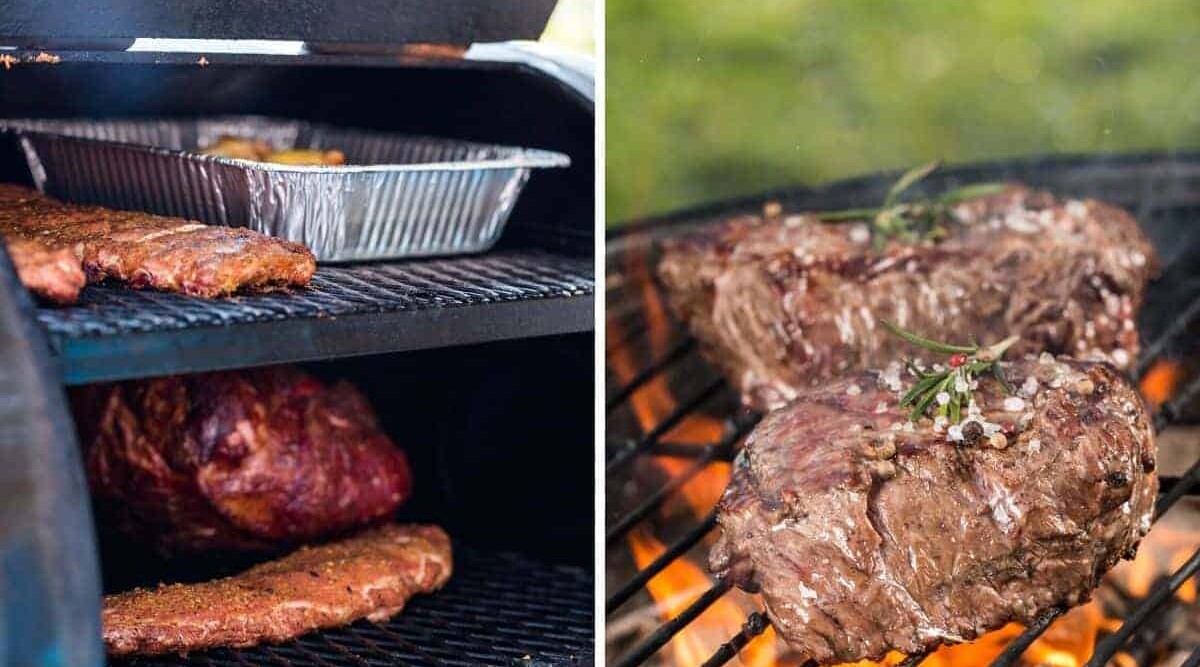
In this article, we’re going to compare smokers vs grills, with a view to helping you decide which between them, you really want, to match your outdoor cooking needs.
There’s a classic oldie that goes, “Did you ever have to make up your mind? And pick up on one and let the other one ride?”
The song was about deciding between two lovely girls. Still, the sentiment applies any time you can’t choose between two things you really want. Or, at least, you think you want them.
For anyone researching new barbecue equipment, you might be confused between smokers and grills. What’s the difference? What can one offer you that the other can’t? And, which one is right for you?
By the end of this article, you’ll have a clear understanding of smokers and grills, what they do, and how they work. Most importantly, you should have a good idea about which type to buy.
Keep reading for all the answers!
Jump to:
- 1 Smoker vs Grill — What is the Difference in a Nutshell?
- 2 What is Grilling?
- 3 The Different Methods of Grilling
- 4 What is Smoking?
- 5 Different Ways of Smoking
- 6 Types of Grills
- 7 Types of Smokers
- 8 Choosing Between a Grill or a Smoker — Questions to Ask Yourself
- 9 How About a Combination Smoker Grill?
- 10 Final Thoughts
Smoker vs Grill — What is the Difference in a Nutshell?
The differences come down to cooking time, temperature, cuts of meat, and the addition of wood smoke for flavor.
A grill — cooks small pieces of food (steaks, chops, chicken pieces, and veg) hot and fast, at high temperatures between 400 and 550F, for short periods of time, and there isn’t usually any smoke adding flavor.
A smoker — cooks large, tough pieces of meat (whole birds, briskets, pork shoulders, and ribs) low n slow, at relatively low temperatures between 90F and 300F for many hours, and there is flavor wood added to the fire to generate smoke and add a smoky flavor.
What a grill and smoker have in common are the fuels they use, and the fact they have sitting on grates.
But they are very different pieces of equipment, made for very different cooking methods.
Let’s take a look at grilling and smoking in more detail.
What is Grilling?
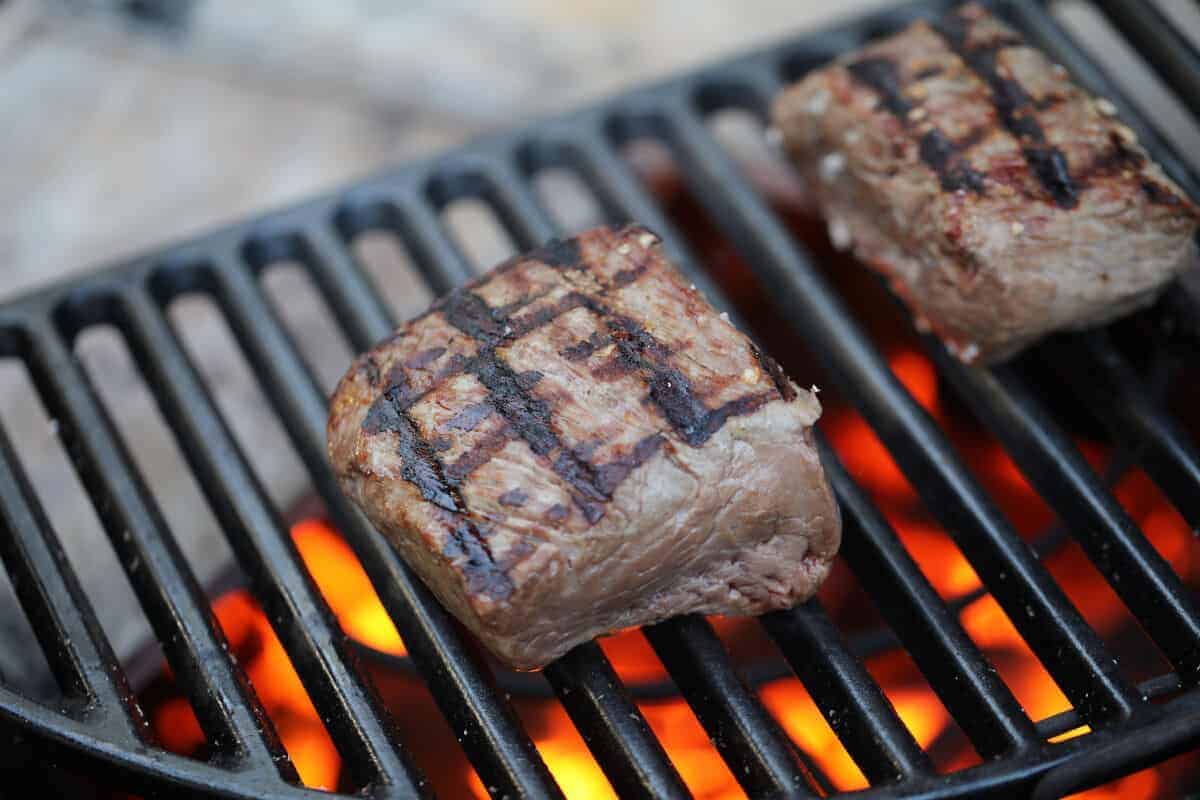
If you Google that question, the first answer is, “An intense interrogation or period of questioning.” Not helpful.
I prefer this definition from Fire Food Chef:
“Grilling is a quick and convenient way to get tasty food on the table.”
Now you’re talking!
As he goes on to explain, grilling generally involves high temperatures and short cooking times. Even roasting is a type of grilling, and though it takes longer and requires lower temperatures, it’s still typically hotter and quicker than smoking.
For example, you might grill a steak at 500F for 10 minutes, or cook a roast at 300F for an hour. As we’ll cover in the next section, you can grill using either direct or indirect heat.
Foods you’d typically cook on a grill include steaks, chops, burgers, hot dogs and sausages, fish, chicken, small roasts, and vegetables. Because there’s a lot of heat, you’ll spend a lot of time moving food around to keep it from burning.
Searing is one of the most important aspects of grilling, and it can only happen over high heat.
Searing causes the surface of your meat to brown via process called the Maillard reaction. It’s a lot like caramelization, and it heightens the flavor of the meat while killing any surface bacteria.
Grilled food can be intensely flavorful, and you may achieve a subtle smokiness, depending on whether you use charcoal or not.
The Different Methods of Grilling
Adding to the confusion (or the fun!), there is more than one type of grilling or more than one method to be precise.
Here’s a quick summary of each.
Direct
The fastest type of grilling, this is also the simplest.
As the name suggests, you place your food on the grate right above the fire and source of the heat, so it cooks with direct radiant heat.
The heat is intense, and you’ll cook your food in minutes. This is the best way to sear steaks and chops, and for cooking other small cuts of meat that can be cooked quickly.
Food Lion defines direct-heat grilling as taking place between 400F and 550F or higher.
Indirect
With this style of grilling, you take advantage of the heat generated by the flames to cook food, but away from direct contact with the fire. Typically, with the lid open, convection does a lot of the cooking, with a far lower amount of radiant heat.
It’s a bit like oven cooking, and it’s ideal for roasting larger cuts for a long time, or for finishing smaller items like steaks and burgers without scorching them.
From our friends at Food Lion again, indirect grilling occurs between about 190F and 300F.
What is Smoking?
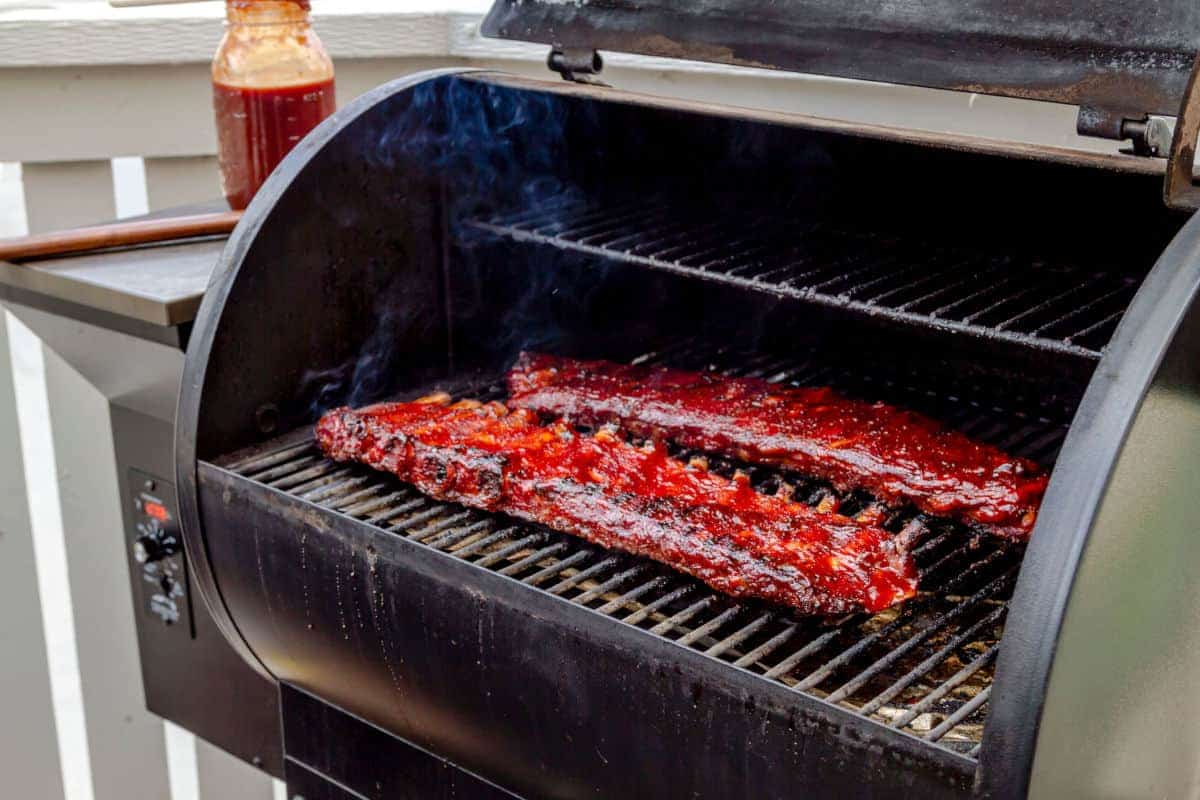
Smoking is a cooking and preserving process for foods that uses a combination of low heat, smoke, and time in a closed environment.
Depending on the type of smoking (check the next section for definitions), the ideal temperature may be anywhere from 90F to 300F.
However, the most common type of smoking, low n slow barbecue, is done between 225 and 250F.
There is no direct heat in a smoker. Instead, the entire cooking or smoking chamber heats up to a reasonably consistent and even temperature. And convection heat cooks the food slowly from all angles at once.
At the same time, the heat source causes wood to smolder and generate smoke.
Because the cook sessions run long, the smoke has time to penetrate the outer layers of your food, leaving deep, smoky flavors behind. The flavor varies depending on the type of wood used.
Smoking times vary depending on what you’re cooking and how large it is.
Small items may only require 90 to 120 minutes. Large cuts may take many hours. Smoking sessions lasting 12 hours or even longer aren’t unheard of, though 5 to 8 hours is a reasonable average.
Though you may think smoking would dry out food and make it inedible, the reverse is actually the case.
The long exposure to heat renders fat and connective tissues inside tough cuts of meat, releasing flavor and leaving meat tender and juicy. “Melt in your mouth” and “fall off the bone” are phrases often used to describe smoked meat.
Foods you might smoke include whole poultry, large hams, and picnic shoulders, butts, brisket, ribs, salmon, and roasts.
Different Ways of Smoking
Just like with grilling, there’s more than one style of cooking when it comes to smoking. Here are the options available to you with many smokers.
Low n Slow / BBQ Smoking / Hot Smoking
The most popular type of smoking by far, this is the method behind every brisket you’ve ever eaten, and the best competition-grade ribs, too.
Typically, low n slow smoking happens between 225F and 250F and lasts for many hours. This is how you turn tough-as-leather brisket into something you barely need teeth to eat.
Smoke Roasting
If your smoker can hit temperatures over 275F, you can smoke roast. (Alternately, most grills are capable of this, though it’s not always easy to keep them cool.)
This is very much like roasting in a kitchen oven with the MAJOR advantage of adding smoke to the flavor profile.
This method works well for foods like crown roasts and lamb. The advantage of smoke roasting is that it’s a faster process, so there’s less chance of lower-fat meats drying out.
Cold Smoking
This unique process applies smoke without heat to flavor and preserve food.
Cold smoking happens at temperatures under 90F. For this reason, it may be dangerous to cold smoke many types of meat because they’re held at a bacteria-friendly temperature for a long time. It takes research and skill to safely cold smoke raw meat.
Alternatively, it’s easy to add smoky taste to precooked meats this way or to smoke cheese and nuts.
Few smokers can cold smoke out of the box. If you want to try it, check to see if your manufacturer offers an add-on cold smoke generator.
Types of Grills
Narrowing down your choice to a grill doesn’t really narrow down your selection much! There are many different grill types, and a variety of fuel sources to choose from.
In many categories, you have the choice between freestanding models or ones that rest on a table, or units that are “built-in” to cabinets or outdoor kitchens.
On the other hand, there are also portable grills to consider, as well as dedicated tailgate grills if you’re into tailgating or RVing, and grills ideal for camping.
It’s a good idea to have a plan in mind for where you want to use your grill and how you envision your outdoor cooking space before you buy a grill.
Here are the major categories and a brief description of each:
Standard Kettle Charcoal Grill
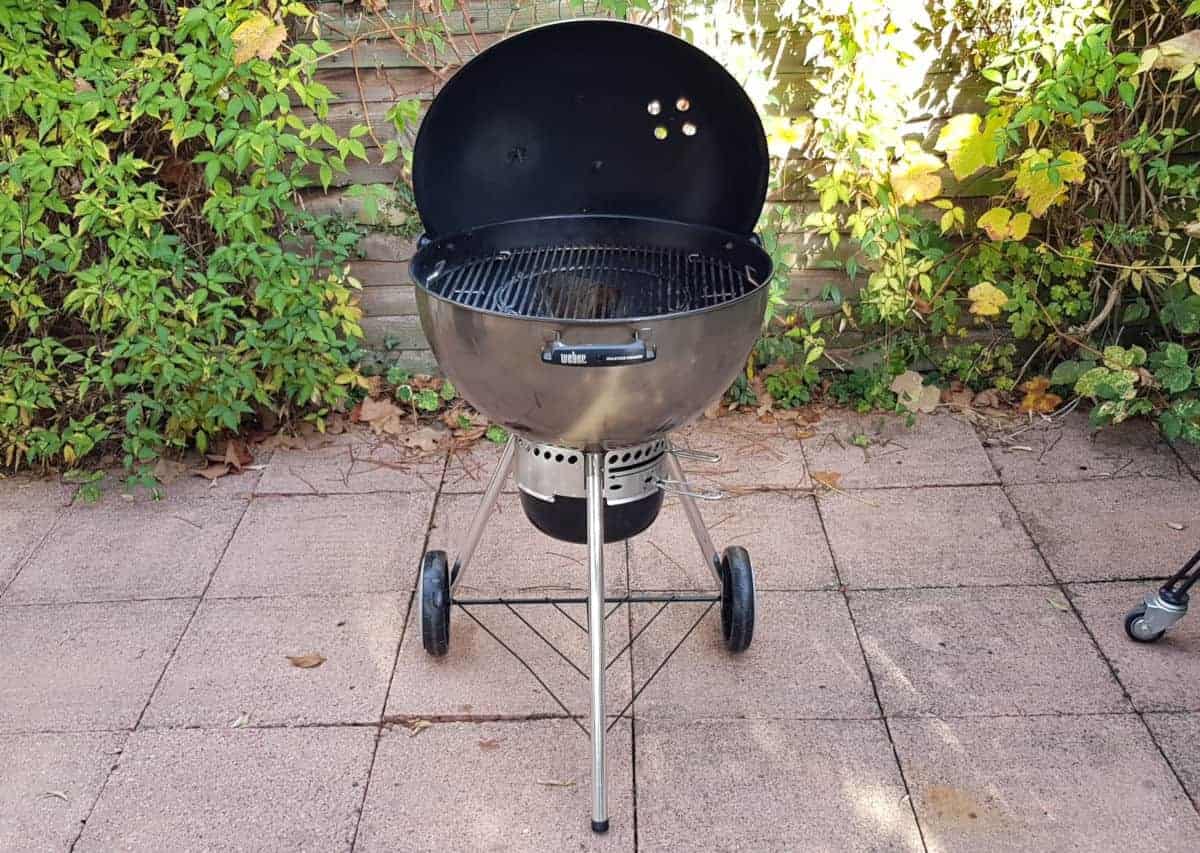
The granddaddy of grills, few among us haven’t eaten something cooked on a charcoal kettle.
They look kind of like UFOs, or onions, and use burning charcoal for cooking food on a grate, while temperature control is achieved by adjusting the airflow through vents at the top and bottom.
You can find a few examples of this type of grill in our roundup of the best charcoal grills.
Ceramic Kamado Grill
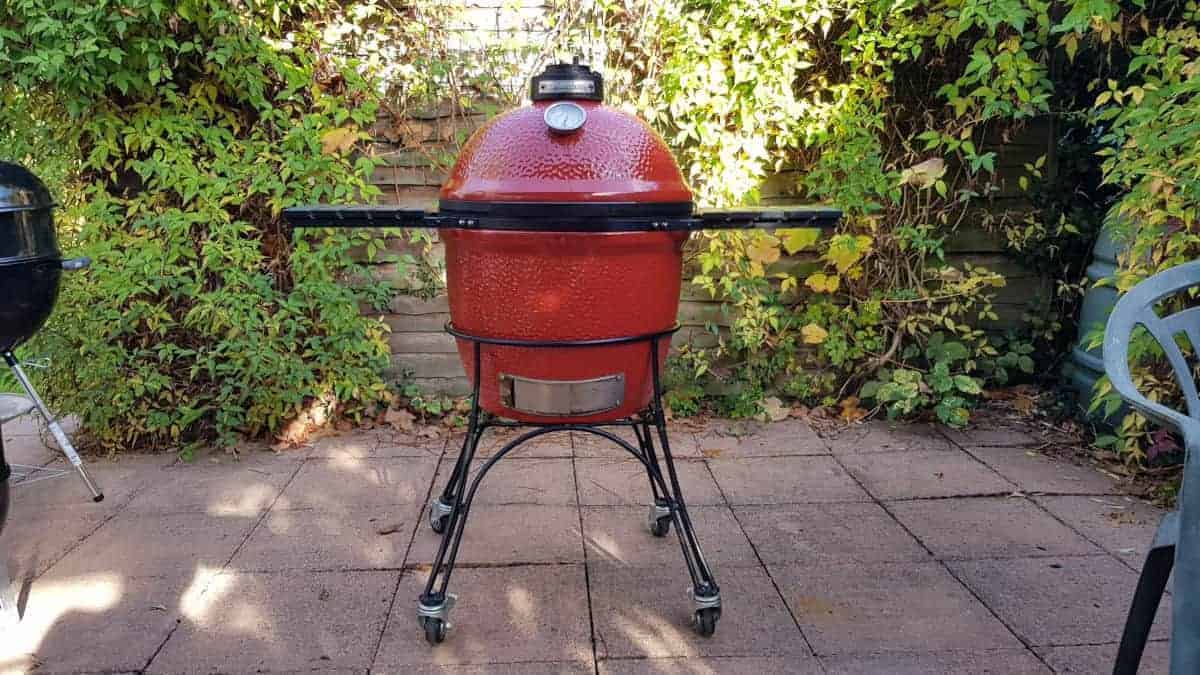
The ultimate charcoal grill, kamados hold their heat extraordinarily well because of their ceramic construction.
They can be extremely expensive, but they are the true Swiss army knife of outdoor cooking, not just a grill! On a kamado, you can grill, bake, roast, and even smoke.
For a few examples of kamado grills, check out our guide to kamado grills.
Barrel Type Grills (oil Drum)
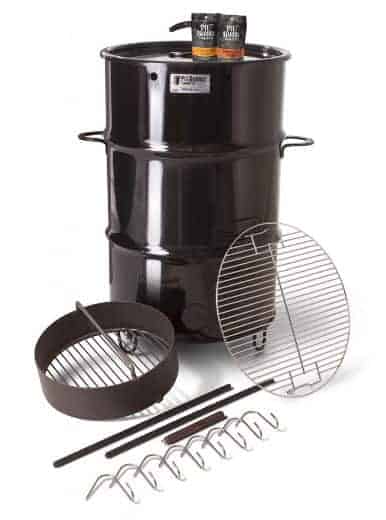
Charcoal grills popular with street vendors and DIYers, the originals were made from old oil drums cut with a blow torch.
You’ll still see home-made jobs, but many manufacturers now offer these large, iconic grills.
Gas Grills
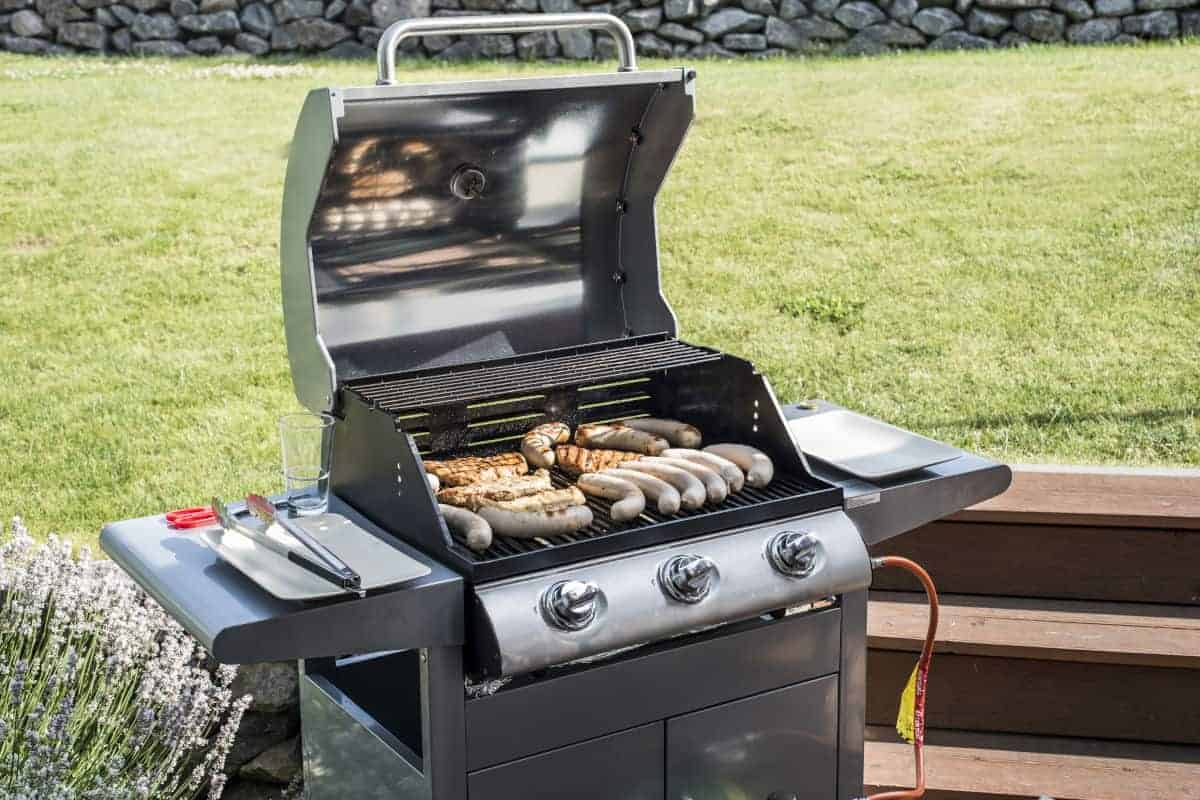
Gas grills come in 2 main types: Propane gas grills, and more recently natural gas grills.
Fuelled by either liquid propane (LP or LPG) from a canister or natural gas tapped from your household supply, both types are extremely popular due to their instant-on convenience, and overall ease of use.
Though they are easy-to-use, there’s nothing burning but gas, so there’s no smoke flavor added like when you cook with charcoal.
Pellet Grills
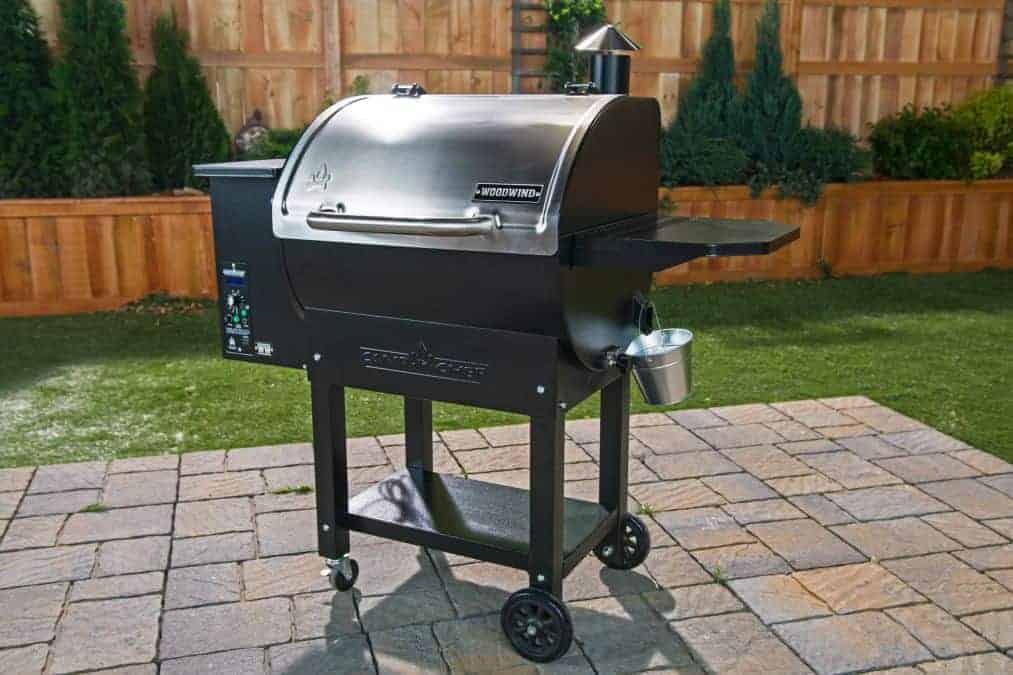
These wonders operate mostly automatically, thanks to an ingenious hopper and auger system controlled by a digital thermostat.
Pellet grills burn pellets of compressed sawdust to generate heat and smoke and deliver a real hardwood smoky flavor.
Their primary purpose is smoking, but many generate enough heat to grill, too.
Electric grills
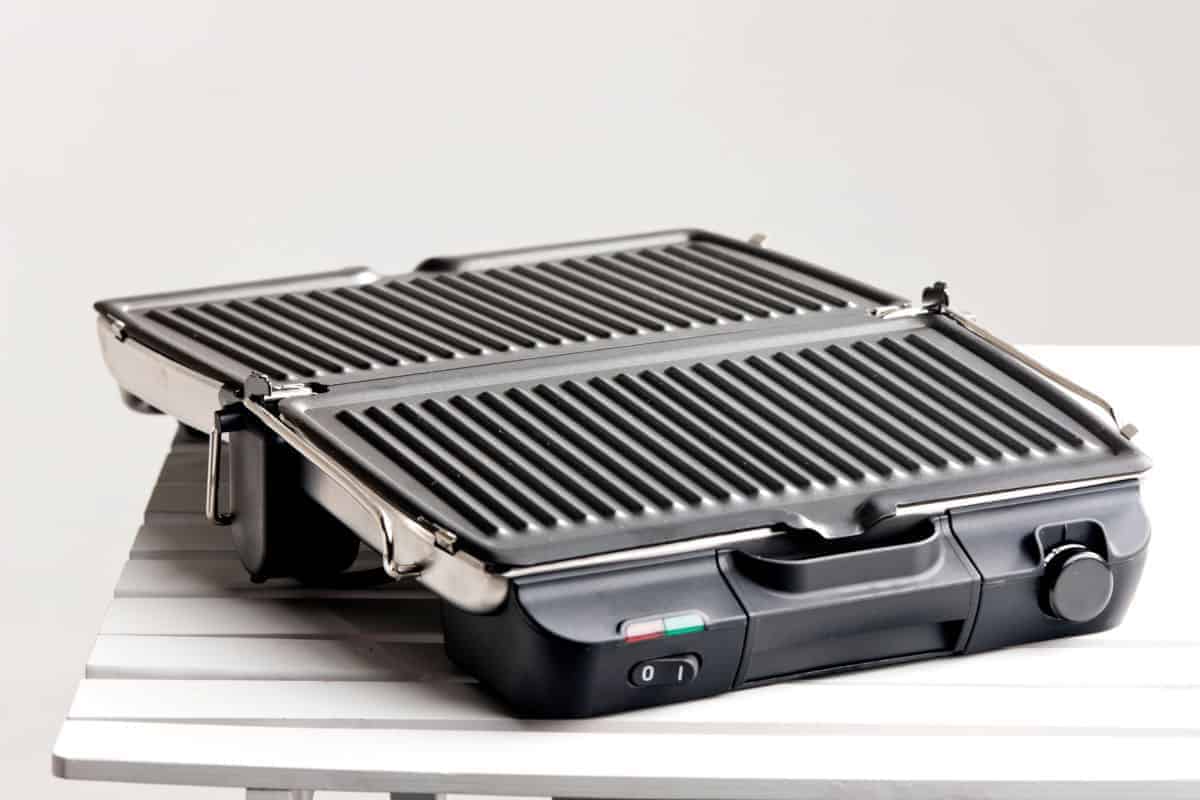
There’s no flame with an electric grill, which makes them perfect for balconies, and anywhere you aren’t allowed to generate fire, including indoors.
Some are more like electric skillets than barbecues, but they’re a good compromise when you can’t have the real thing.
Infrared
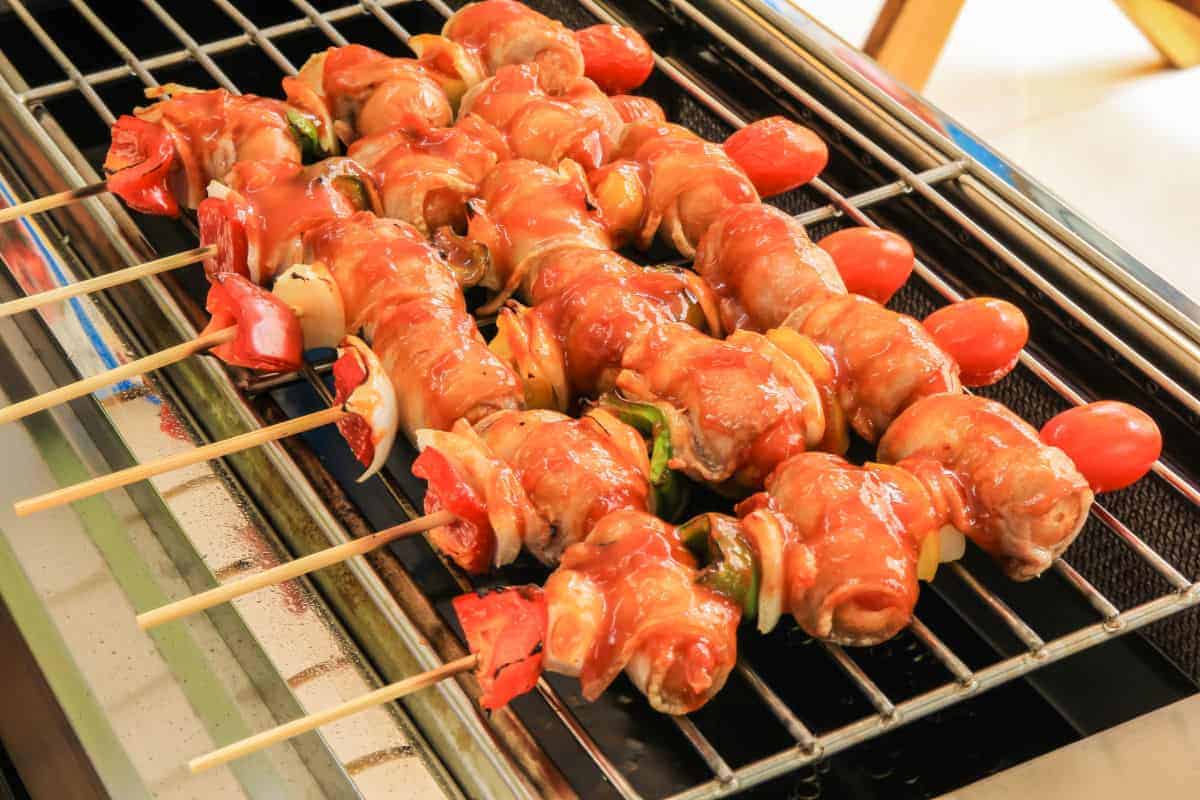
These grills use gas or electricity to super-heat a piece of metal or ceramic. The heated material radiates extreme heat, perhaps as high as 1200F, to cook food in minutes or even seconds.
Standalones are uncommon, but some high-end gas grills include an infrared element. However, more manufacturers have added dedicated IR grills to their product lines in recent years.
Types of Smokers
Similarly to grills, there are a wide variety of different smoker types on the market, differing in size, shape, and fuel types.
Let’s take a look at the most common types in turn.
Charcoal Smokers
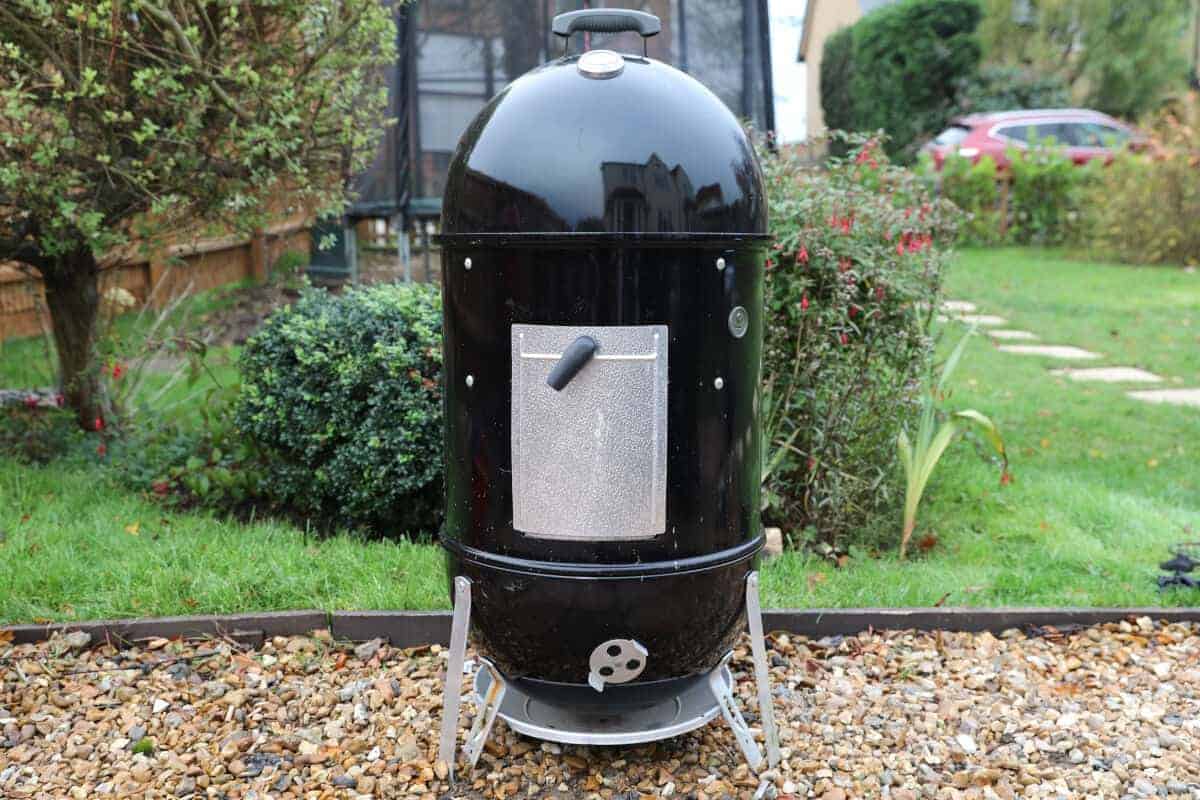
Charcoal is the fuel source for these basic smokers.
Ranging in shape from upright drums (ugly drum smokers) to egg-shaped ceramic Kamados, bullet looking water smokers, to cabinet shaped smokers, they come in sorts of shapes and sizes.
Charcoal is the fuel of choice, with wood chunks added on top of the charcoal to provide the flavored smoke.
Check out our guide to see some examples of the top charcoal smokers.
Electric Smokers
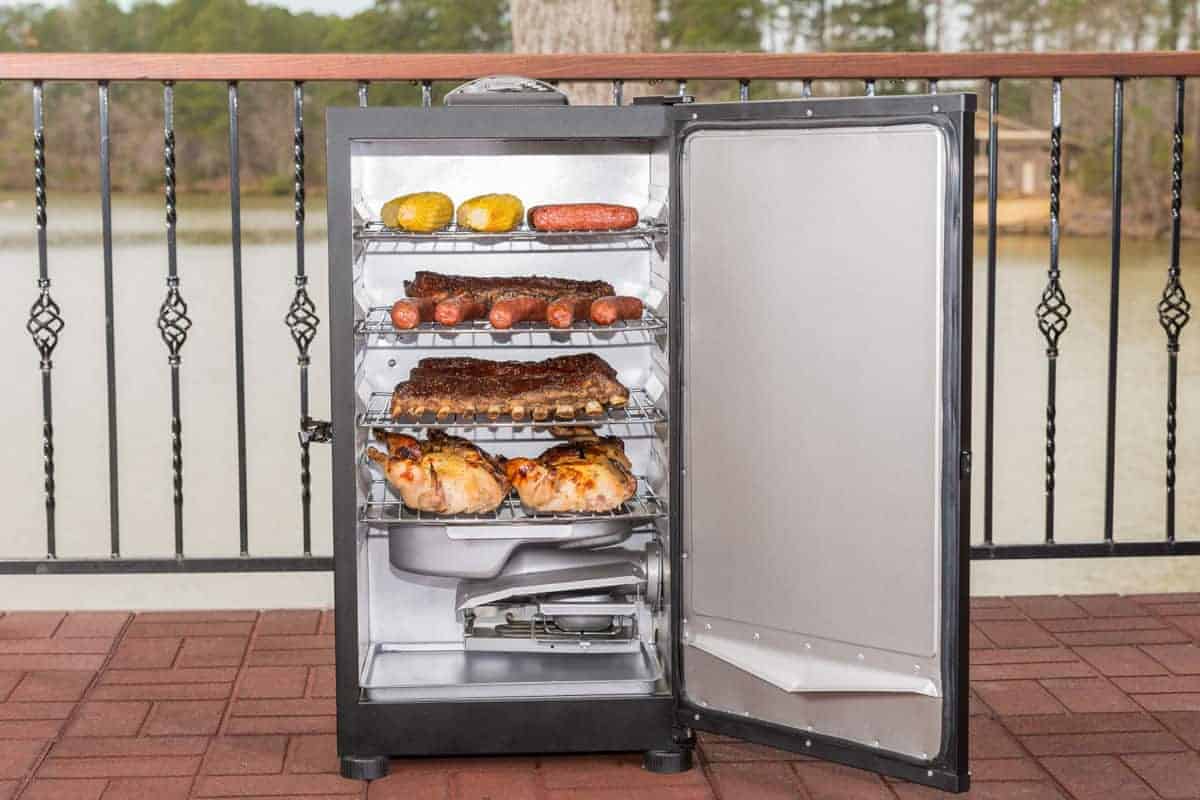
In electric smokers, a heating element sets wood chips in a bowl smoldering to generate smoke.
Smoke and heat rise up from beneath the food, cooking it and imparting a smoky flavor.
Electric smokers are typically vertical models and resemble small fridges or safes.
They are true ‘set-and-forget,’ which a digital controller where you can set temps and timers, then walk away with everything perfectly managed hands-off.
Gas Smokers
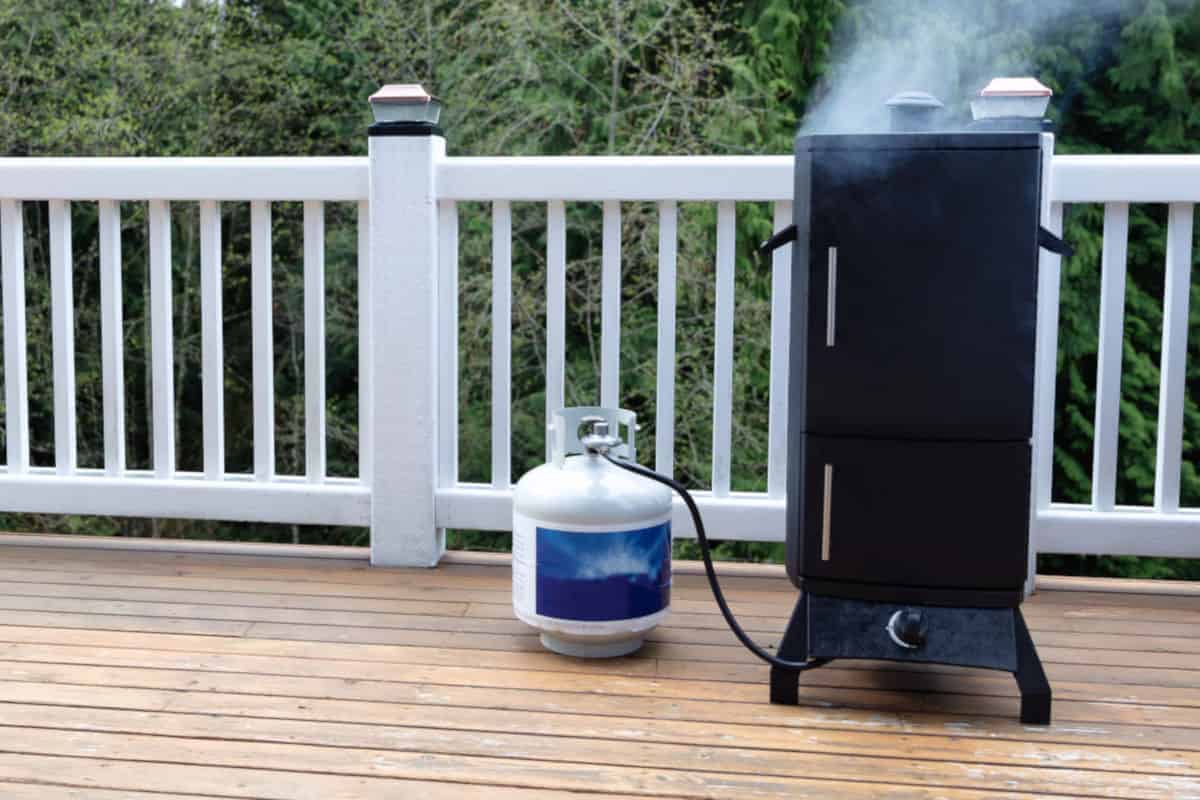
These units look and function exactly like electric smokers, only they use a gas burner to ignite the wood chips.
Most will not need electricity to operate, though some do have a digital controller that requires also plugging into an electricity supply.
Stick Burners — Offset Smokers
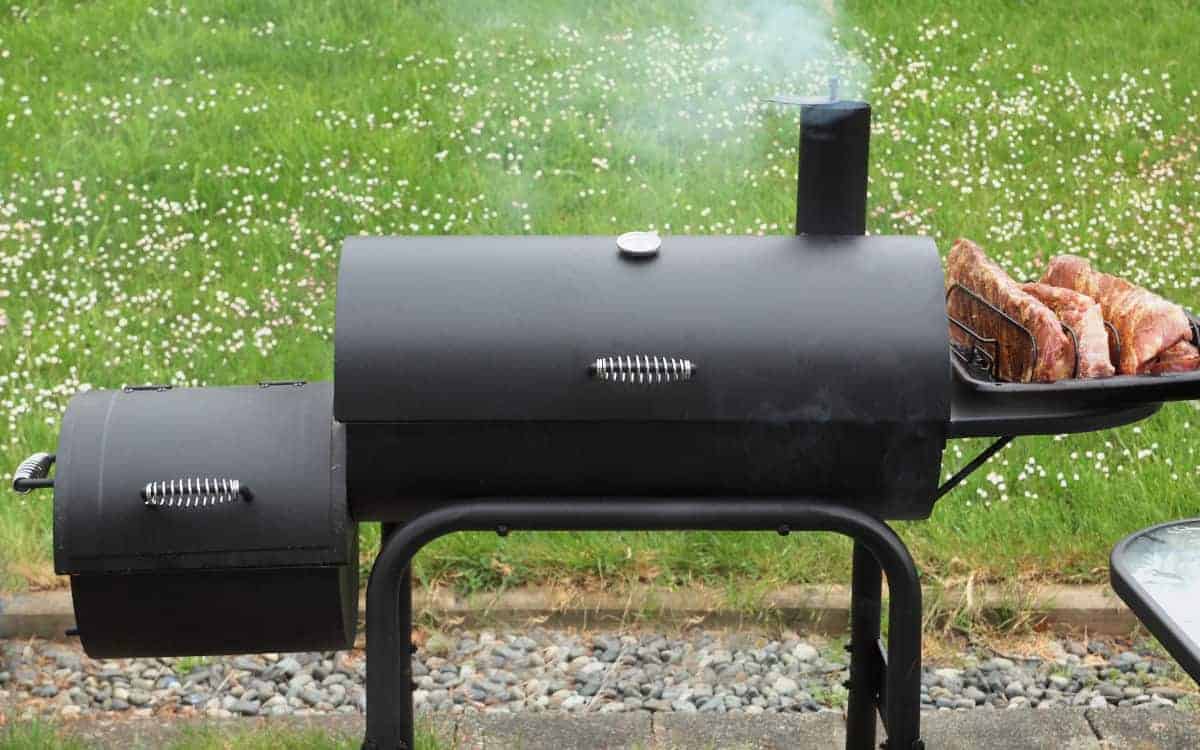
The simplest of all smokers, you burn your choice of wood in a firebox separate from the cooking/smoking chamber.
Smoke and indirect heat drift into the smoking chamber, pass over the food, and exit through a chimney.
They may be vertically or horizontally oriented.
Pellet Smokers
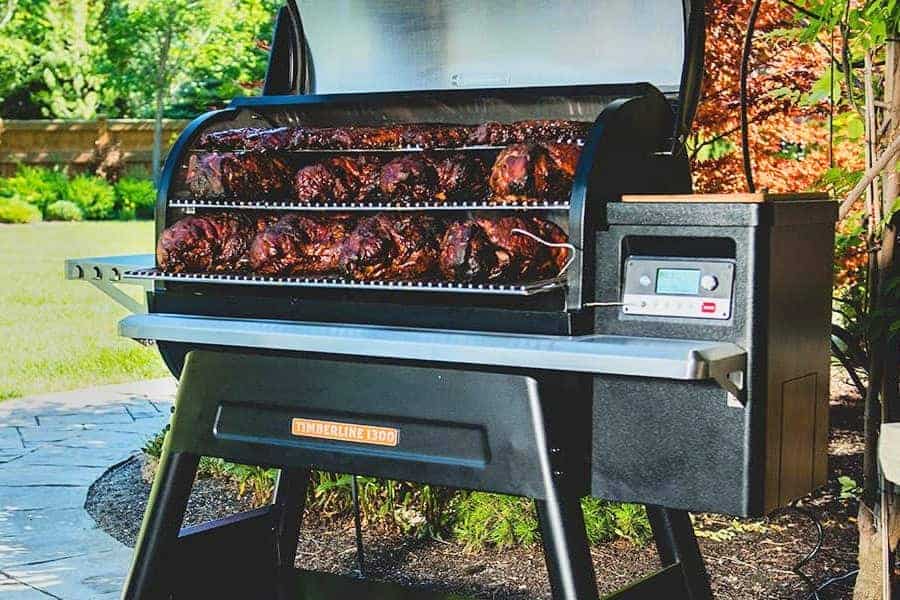
An electronic controller automatically delivers wood pellets from a hopper to a fire pot inside the smoke chamber to maintain a preset temperature.
Wood pellets are made from compressed sawdust leftover from the lumber industry, and these are used as the fuel to generate both heat and smoke.
Choosing Between a Grill or a Smoker — Questions to Ask Yourself
Time to do a little soul-searching.
Take this mini quiz to help make an informed decision — and be honest!
Do You Even Like Smoked Food?
Websites devoted to smokers and smoked food make brisket, and other smoked meats seem like the greatest culinary achievements in history. But have you tried it?
Unless you know for sure you really enjoy smoked food, you may want to hold off — it’s not like they do anything else!
Find some great barbecue joints near you and sample a bunch of smoked foods to see if it’s really for you. If it’s not, then a grill is probably the best choice for your backyard cookouts.
What Sort of Foods do You Intend to Cook Outdoors?
Some of the tastiest, most satisfying stuff you can cook is also the simplest. I’m talking about hot dogs, hamburgers, sausages, chops, chicken breasts, and vegetables. If that’s what you plan to cook on the regular, then a grill will suit your needs.
But, if you’ve got dreams of picnic shoulders, butts, and briskets in your head, a smoker is your best bet.
Many grills and smokers offer additional features. Knowing what they are might help you make a decision. For example, does the idea of adding a rotisserie to your grill sound appealing?
Think about what you want to eat, how you want to cook it, and what you might want to experiment with down the road.
Do You Have Time and Patience for Smoking?
As great as smoking huge cuts of meat sounds, the reality is it can take a lot of time and effort.
Many smokers require regular attention, including monitoring internal temperatures, adjusting vents, and adding wood. And, it can take many hours, or even all day or overnight, to smoke something large.
By contrast, you can grill an incredibly tasty steak in 10 minutes or less on a hot grill.
You know yourself better than anyone, so ask yourself before you buy, “Do I have the patience, and will I find the time to actually use a smoker?”
How About a Combination Smoker Grill?
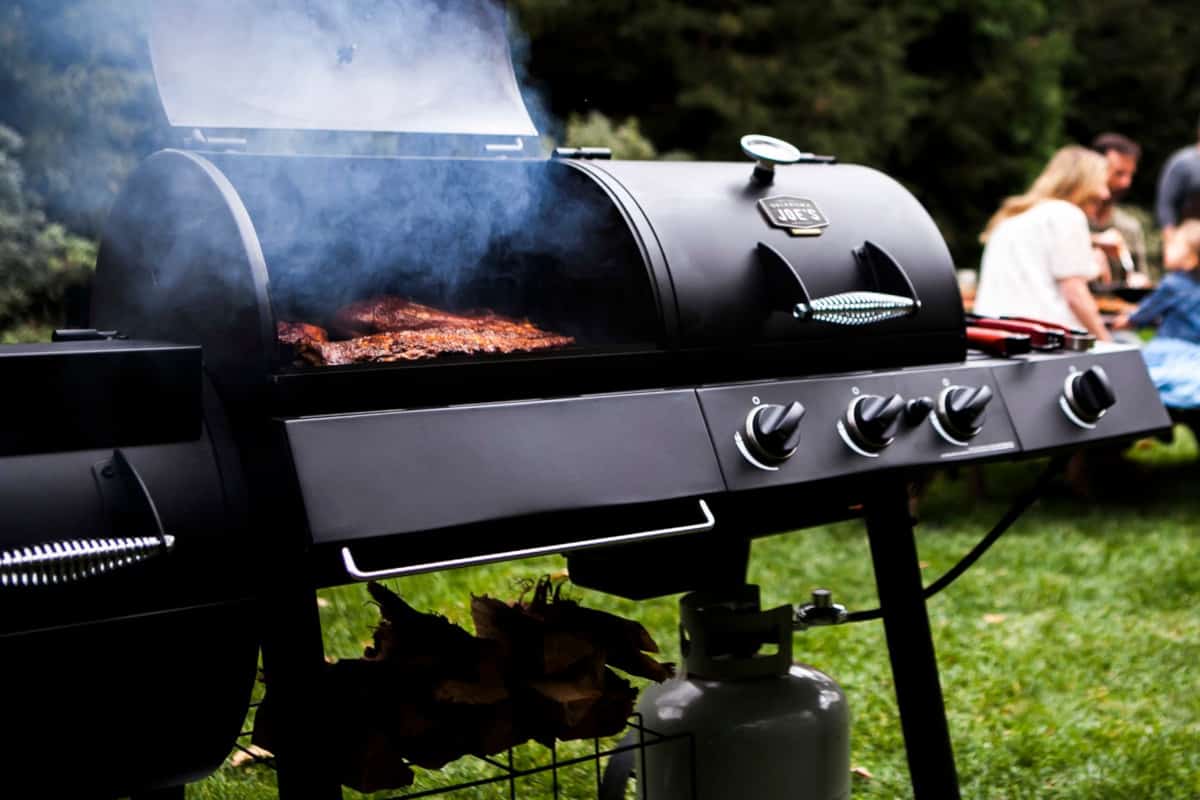
If you’d like to sample both worlds, consider a combination cooker. There are a few types of barbecue available that both smoke and grill.
For example, ceramic kamado grills are so well insulated, they can smoke like a champ, and even roast or bake. It’s also possible to get them blazing hot, allowing you to sear just like a standard grill. They cost a pretty penny, but kamados are extremely versatile.
Some pellet smokers allow you to crank up the heat for grilling food. Take note, though, that because they cook via indirect heat, they aren’t able to sear, no matter how hot you get it inside. A few units do exist with special searing zones located over the fire pot.
Final Thoughts
So, in the great smoker vs grill battle, who was the winner? That all depends on you!
By now, you should have a clear idea of whether a smoker, a grill, or a combination of the two is the best choice for your life.
Be sure to browse through the articles on this site and take advantage of the search bar to learn as much as you can before you buy.
The more you know, the better your ‘cues will be — and the more fun you’ll have!
We’ve also got reviews of some of the best smokers and grills on the market to help you make an informed decision when you purchase.
Thanks for coming by as part of your journey towards the best possible barbecue experience.


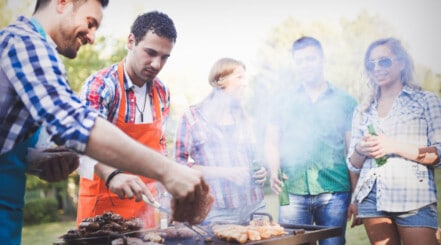
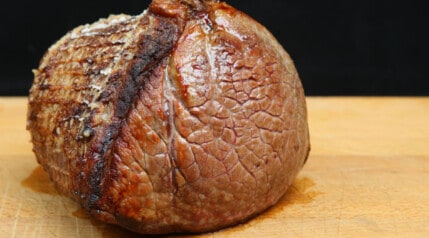
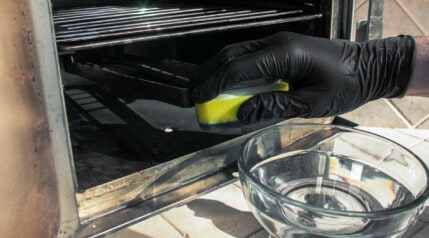
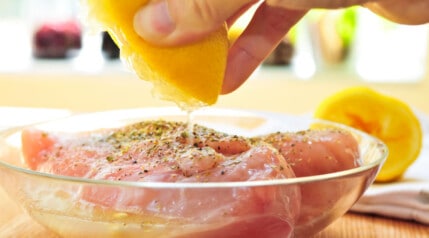
Many smokers require regular attention, including monitoring internal temperatures.
Absolutely. Mastering temperature control is the top skill required for successful grilling or smoking.
How do you monitor the temperature?
Hi Andrew. I have a wide range of thermometers that I use. I always recommend a dual probe minimum, one to monitor the pit temp, one to monitor the meat internal temp. After that, you can go wireless, so you can monitor it remotely from a receiver, or better still one with a smartphone app, so you can monitor and receive alarms on your phone. We discuss all types of thermometers here: Smoker and BBQ thermometers.
I grill on my pellet smoker just fine, it heats well past 500 degrees no problem. Most hold temps to within a degree and practically cook for you via a phone app. I don’t see the point of a gas grill unless you really hate the taste of smoke.